Hola amigos creadores 🐝 espero que se encuentren muy pero muy bien✨ hoy quiero compartir con todos ustedes la manera en que le hice una nueva cama a mi perrita kila 🐶 tenía ya rato queriendo hacerle una cama nueva porque la que tenía ya estaba toda rota por todos lados y ella la usaba más que todo en el día y por las noches dormía en el mueble.
Hello friends creators 🐝 I hope you are very, very well✨ today I want to share with all of you how I made a new bed for my dog kila 🐶 I had been wanting to make her a new bed for a while because the one she had was already broken all over the place and she used it mostly during the day and at night she slept on the furniture.
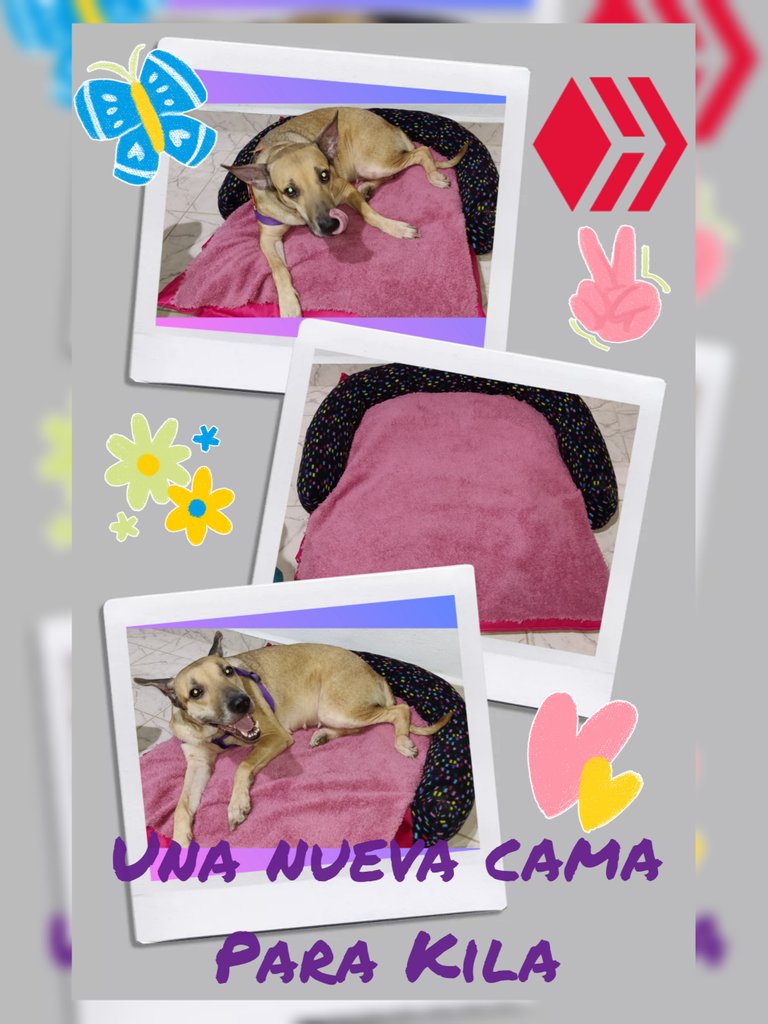
También que la otra cama le duró casi nada, porque el otro perrito que adopte Duque usaba la cama para llevar cualquier cosa y comérsela encima de la cama o la tenían para hacer desorden jugando entre los dos ☺️ lo cierto es que la volvieron un desastre porque está cama estaba hecha con tela polar y no aguanta mucho, por eso para está cama quise usar un material más resistente y que fuera fácil de limpiar, así que use una tela que se llama loneta impermeable.
Also the other bed lasted almost nothing, because the other doggy Duque used the bed to carry anything and eat it on top of the bed or they had it to make a mess playing between the two ☺️ the truth is that they made a mess because this bed was made with fleece and does not hold much, so for this bed I wanted to use a more resistant material and was easy to clean, so I used a fabric called waterproof canvas.
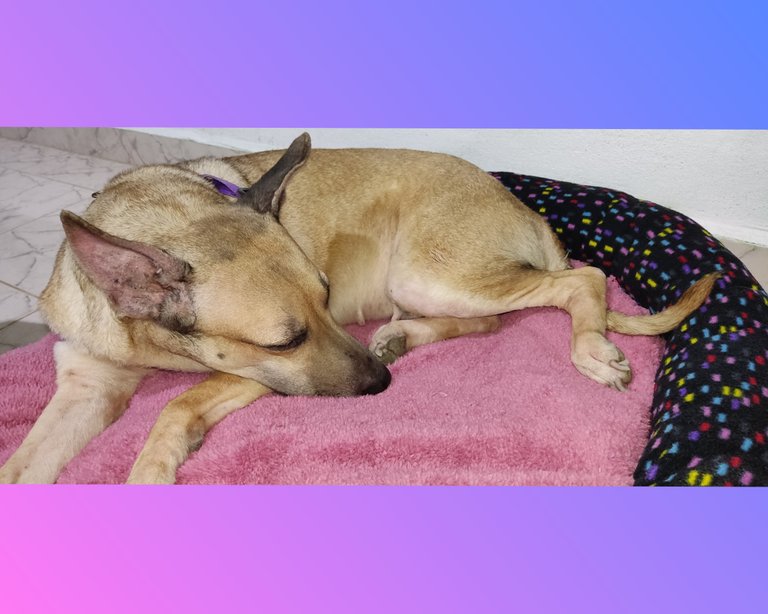
MATERIALES // MATERIALS
🧵 Loneta impermeable.
🧵 Tela polar.
🧵 Relleno.
🧵 Guata.
🧵 Cierre.
🧵 Hilo y agujas.
🧵 Waterproof canvas.
🧵 Fleece fabric.
🧵 Padding.
🧵 Wadding.
🧵 Zipper.
🧵 Thread and needles.
PASO A PASO // STEP BY STEP
Empezaremos por cortar la loneta impermeable de tamaño que deseamos tenga la cama del perrito, en este caso use 80cm de ancho por 75cm de largo.
We will start by cutting the waterproof canvas in the size we want the doggie bed to be, in this case use 80cm wide by 75cm long.
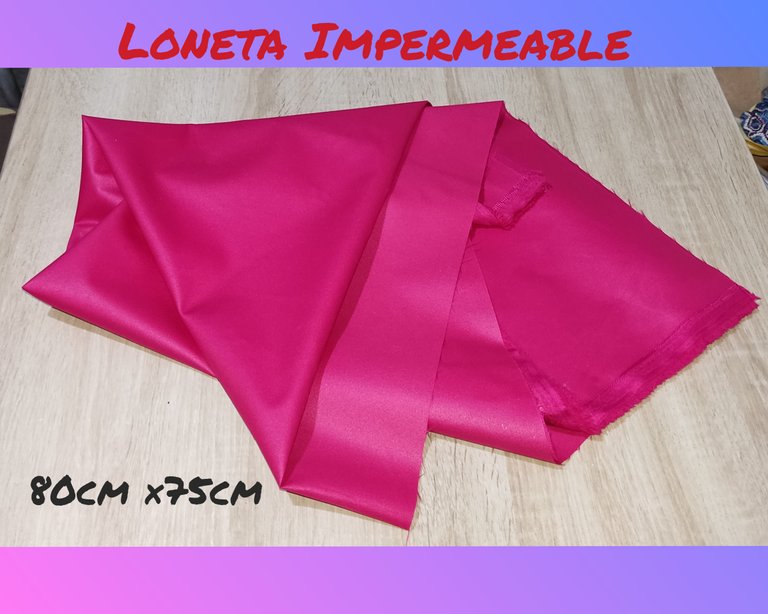
Luego que ya tengamos la tela cortada del tamaño que deseamos, vamos a coser con aguja e hilo, dando puntadas hacia atrás (punto atrás) procurando que nos quede recto, esta costura es algo delicada porque la tela es dura y si no tenemos cuidado vamos a puyarnos mucho, ahora si tenemos una máquina de coser debe ser super fácil pienso yo jejejeje (nunca he usado una máquina de coser☺️)
After we already have the fabric cut to the size we want, we will sew with needle and thread, giving stitches backwards (back stitch) trying to make it straight, this seam is somewhat delicate because the fabric is hard and if we are not careful we will puyarnos much, now if we have a sewing machine should be super easy I think hehehehe (I've never used a sewing machine☺️)
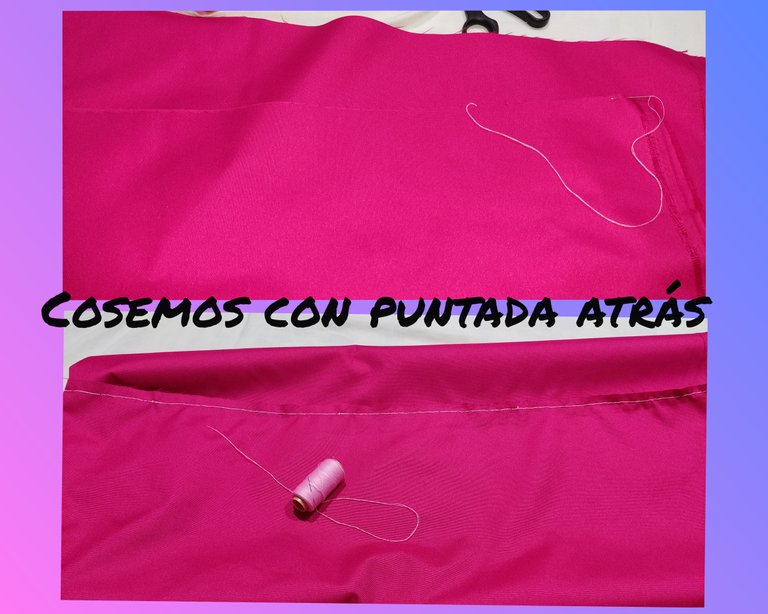
Nos deben de quedar cosidos los lados, más o menos como se ve en la imágen.
We should be sewn the sides, more or less as shown in the image.
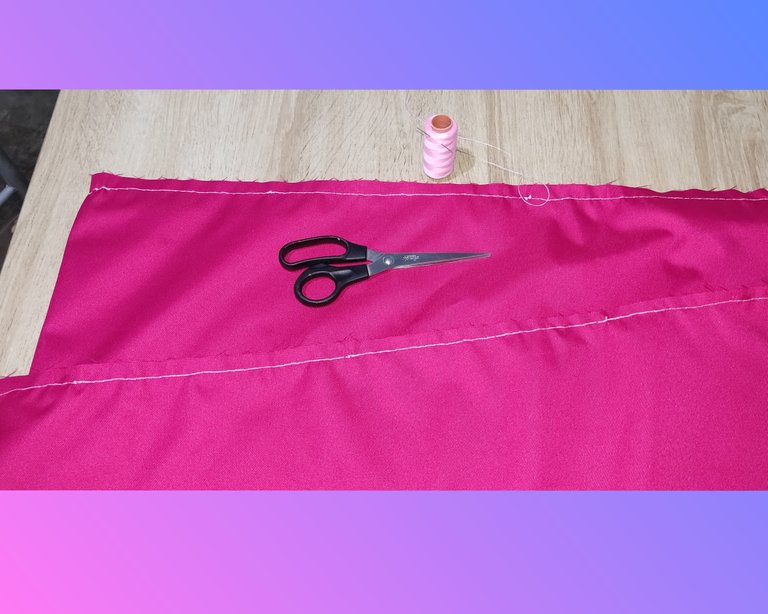
Luego vamos a coserle el cierre, el cierre que tenía no era tan grande como para cubrir toda la abertura, entonces decidí colocarlo en el medio, lo basteamos primero para que no se nos mueva cuando estemos haciendo la costura.
Then we are going to sew the zipper, the zipper I had was not big enough to cover the whole opening, so I decided to place it in the middle, we baste it first so it won't move when we are sewing the seam.
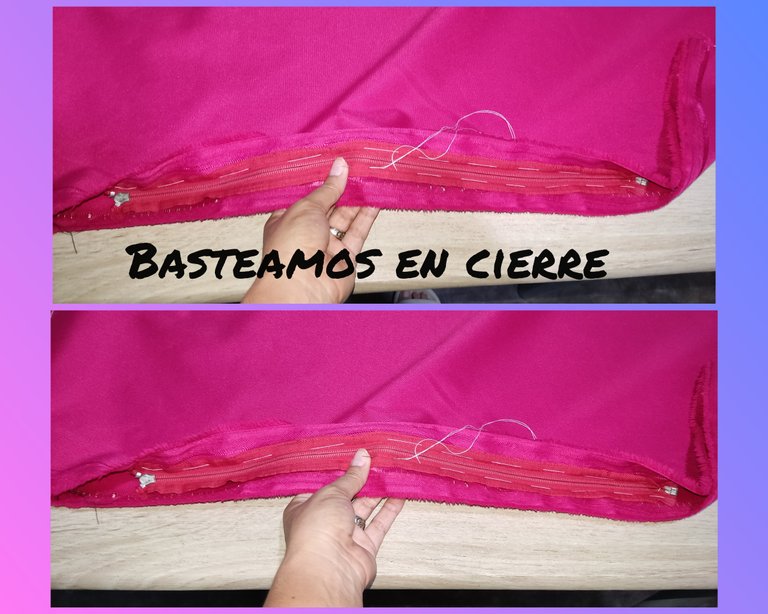
Luego empezamos a coser el cierro haciendo puntadas hacia atrás y cosemos ambas partes del cierre.
Then we start sewing the zipper by back stitching and sew both parts of the zipper.
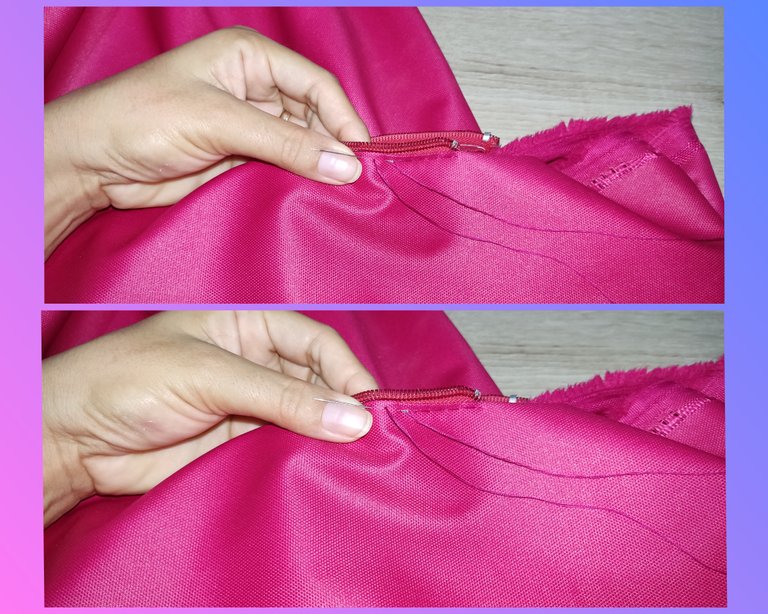
Nos debe de quedar así.
It should look like this.
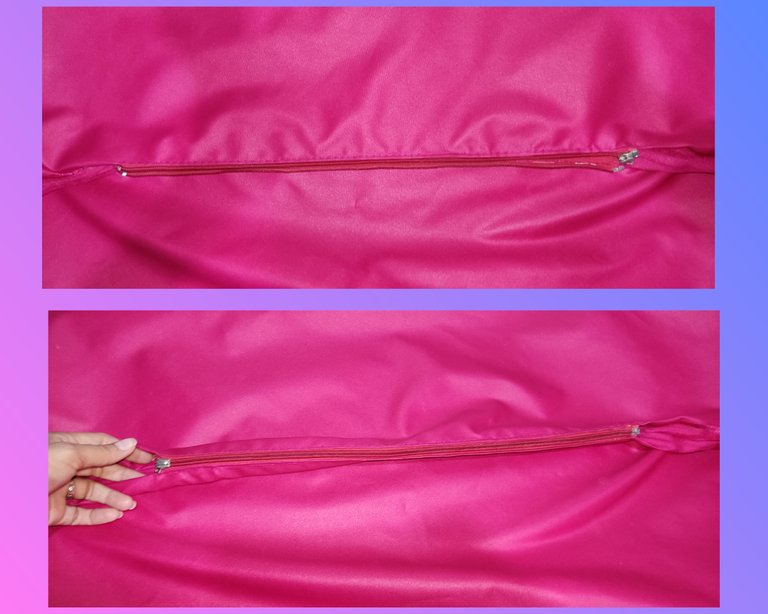
Luego vamos hacer la costura de los extremos para que nos quede bien cerrado, como está parte queda no la podemos coser al revés, entonces doblamos un poco hacia adentro las orillas de la loneta y cosemos por fuera para que nos quede mejor el acabado y quede en dirección del cierre.
Then we are going to make the seam of the ends so that it is well closed, as this part is left we can not sew it backwards, then we fold a little inward the edges of the canvas and sew on the outside so that we have a better finish and it is in the direction of the closure.
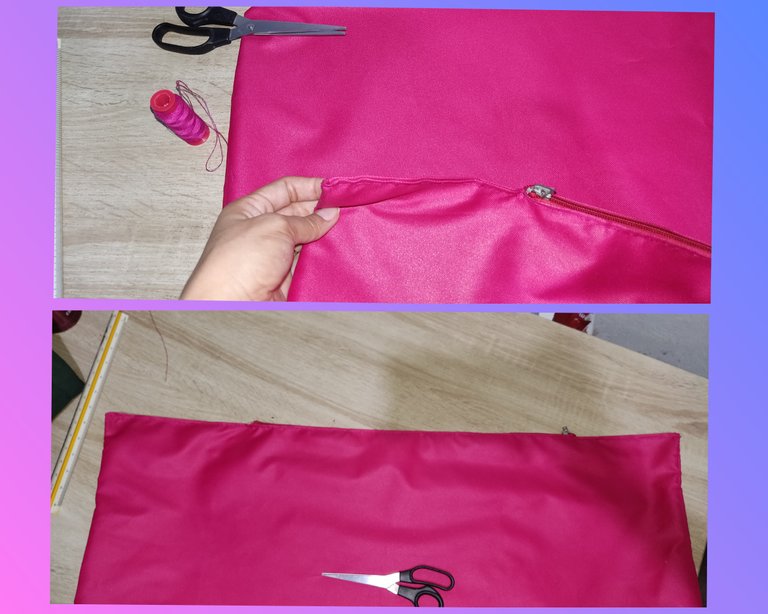
Así nos va a quedar la abertura de la cama para meterle el relleno y luego cerrarlo, y así podemos sacarle el relleno y lavarla con facilidad.
This way we will have the opening of the bed to put the stuffing in and then close it, so we can remove the stuffing and wash it easily.
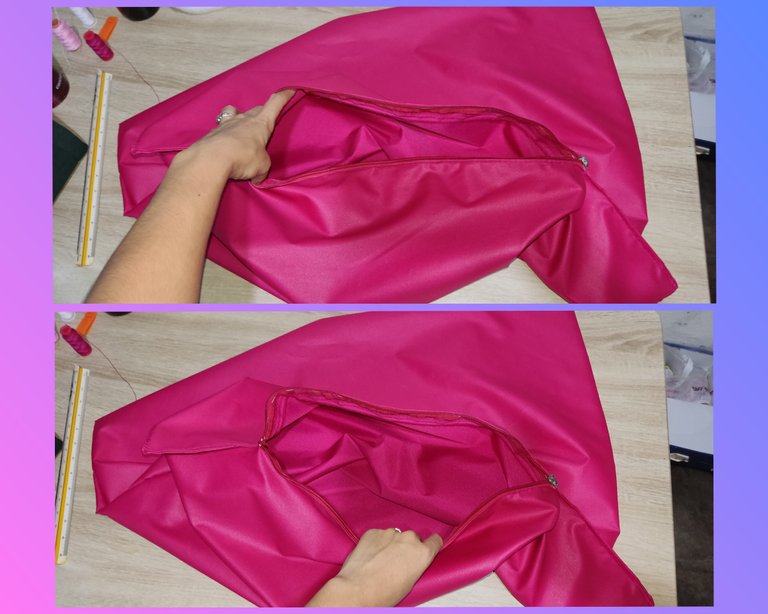
Luego tomamos la tela polar, para hacerle un cojín que bordee parte de la cama donde se puedan recostar, use 40cm de ancho por 150cm de largo, cose la tela por el revés dando puntadas hacia atrás.
Then we take the polar fabric, to make a cushion that borders part of the bed where they can lie down, use 40cm wide by 150cm long, sew the fabric on the back side stitching backwards.
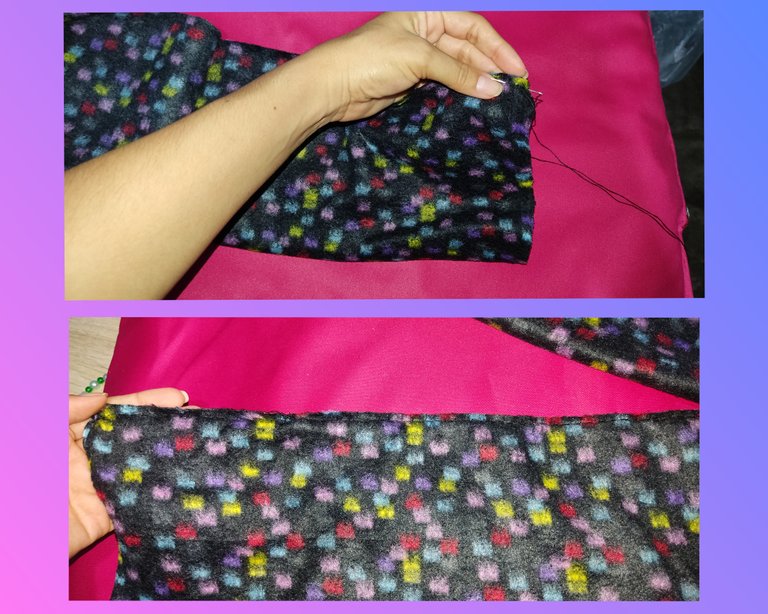
Luego que la cosi por todas la orilla, voy aa coser también uno de los extremos,y así solo dejar una abertura para el relleno.
After I sew all around the edge, I will also sew one of the ends, leaving only one opening for the stuffing.
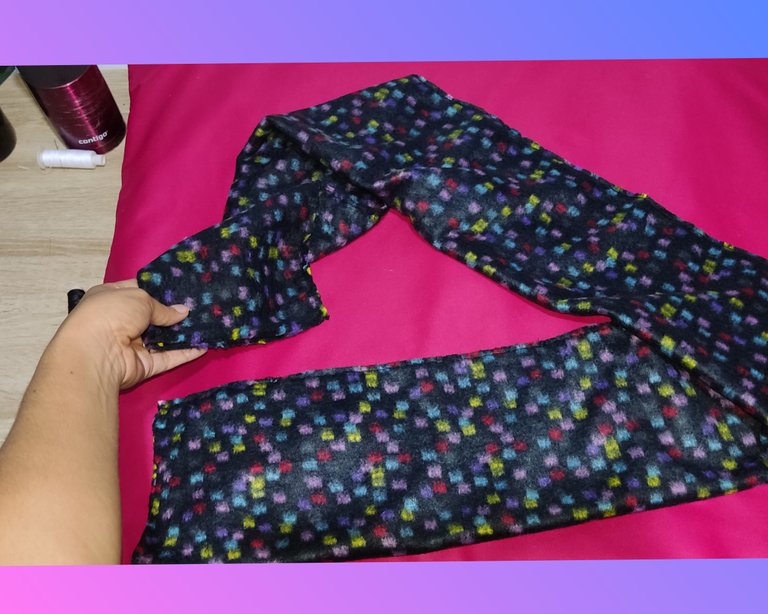
Tomaremos la guata del grueso que tengamos o el que más nos guste yo use usa que es gruesa de 4mm, y la colocamos por el revés de la tela polar que ya hemos cosido y la ponemos como un sándwich, así como vemos en la imagen.
We will take the wadding of the thickness we have or the one we like the most, I use a 4mm thick wadding, and we place it on the back side of the fleece we have already sewn and we put it like a sandwich, as we can see in the picture.
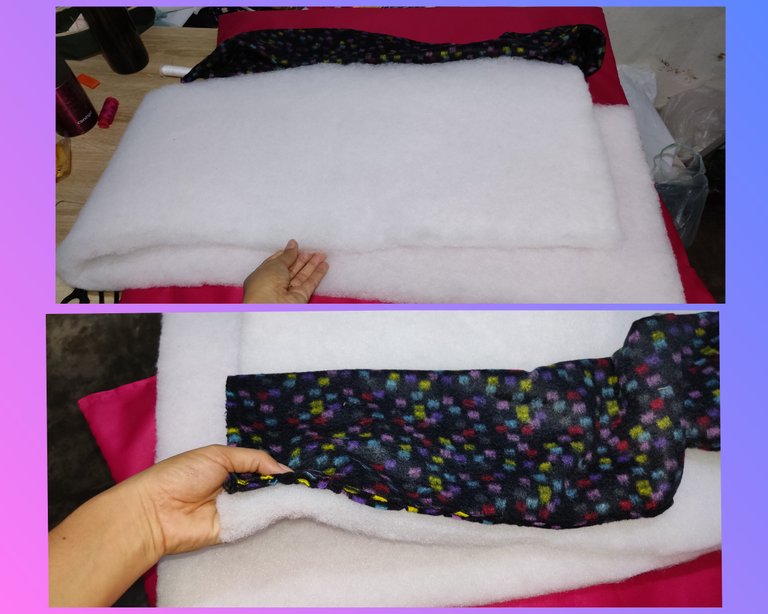
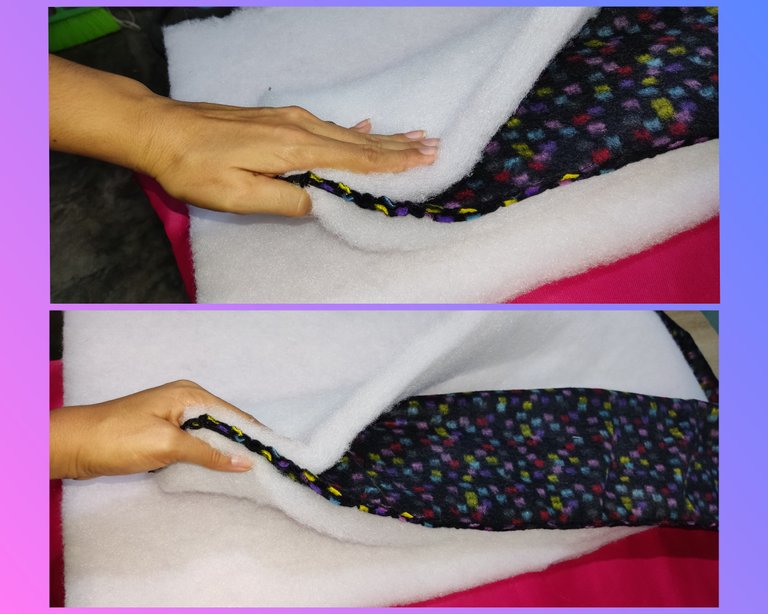
Y vamos a coser por toda la orilla para que así nos quede unida la guata a la tela polar y así cuando la volteamos la tela polar la guata nos queda posicionada adentro.
And we are going to sew all around the edge so that the wadding is attached to the polar fabric and when we flip the polar fabric over, the wadding is positioned inside.
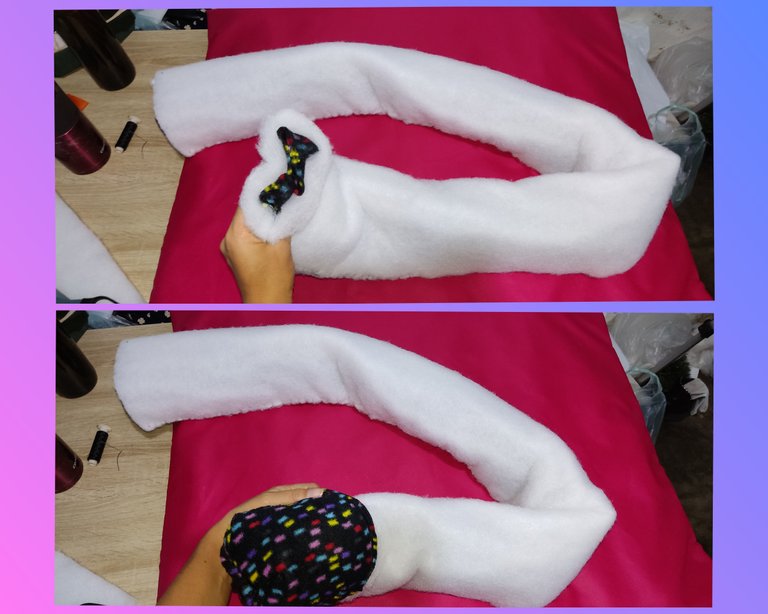
Y nos queda nuestro cojín más armado y no necesitara tanto relleno para tomar la forma que queremos.
And our cushion will be more reinforced and will not need so much stuffing to take the shape we want.

Ahora le vamos a meter en relleno y vamos a cerrar el extremo, para así tener listo nuestro cojín tipo cilindro que va alrededor de la cama.
Now we are going to put in the stuffing and we are going to close the end, so that we have our cylinder type cushion ready to go around the bed.
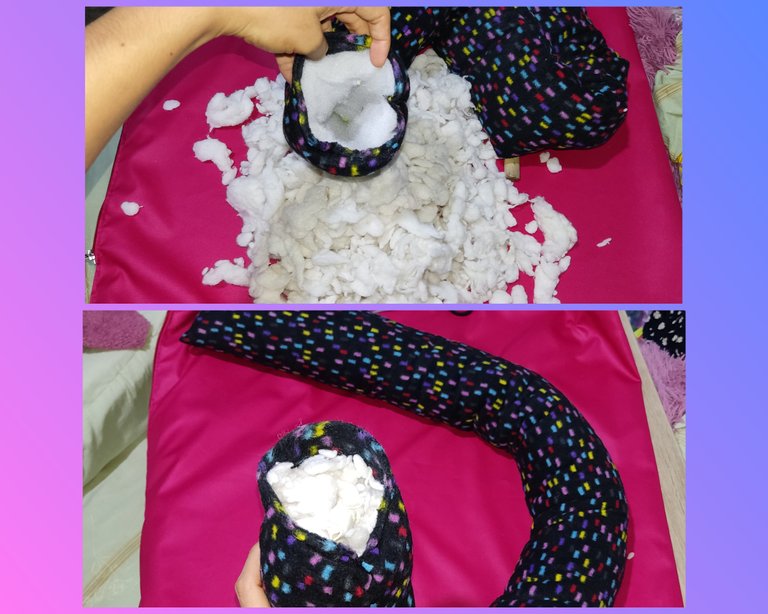
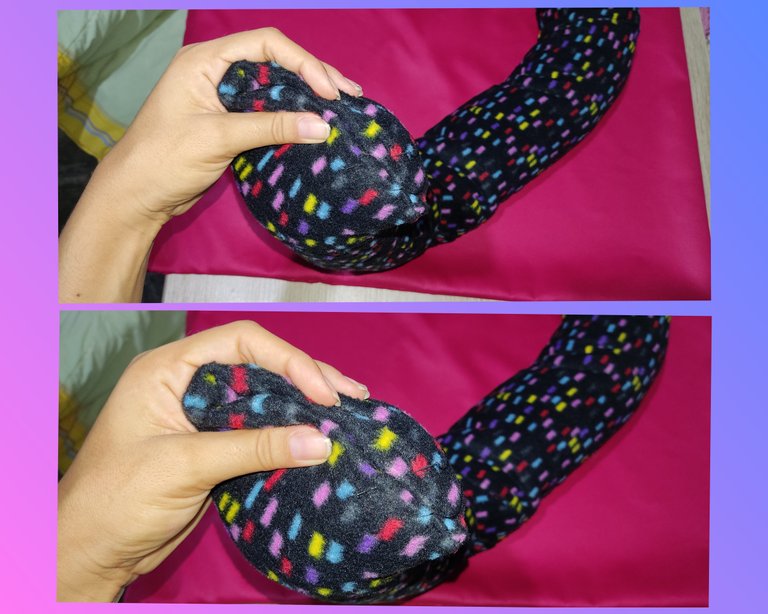
Con unas puntadas vamos a sujetar el cojín alrededor de la cama.
With a few stitches we will fasten the cushion around the bed.
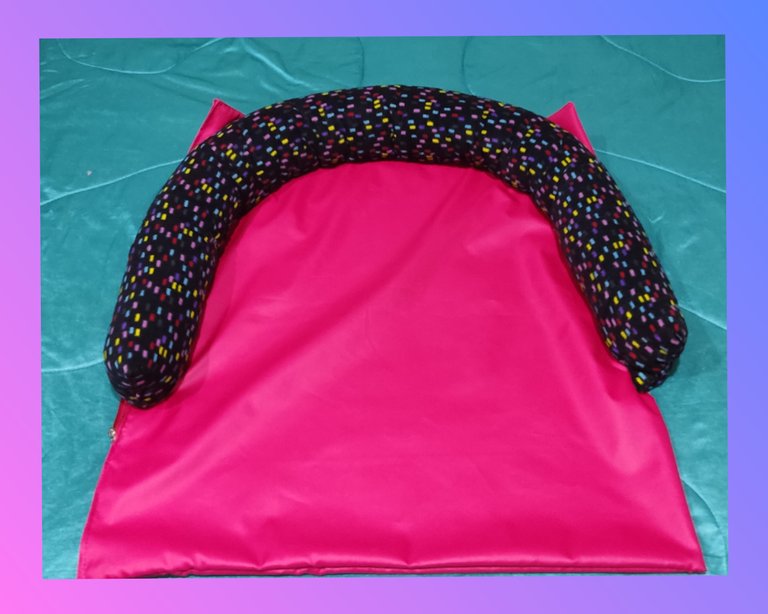
Al cojín principal le meteremos el relleno, yo uso una goma espuma del tamaño del cojín, y encima le pongo algo de relleno para que sienta textura en la cama a ella le gusta sentir que está acostada sobre cosas y estar recostada ☺️.
To the main cushion we will put the stuffing, I use a foam rubber the size of the cushion, and on top I put some stuffing so that she feels texture on the bed, she likes to feel like she is lying on things and lying down ☺️.
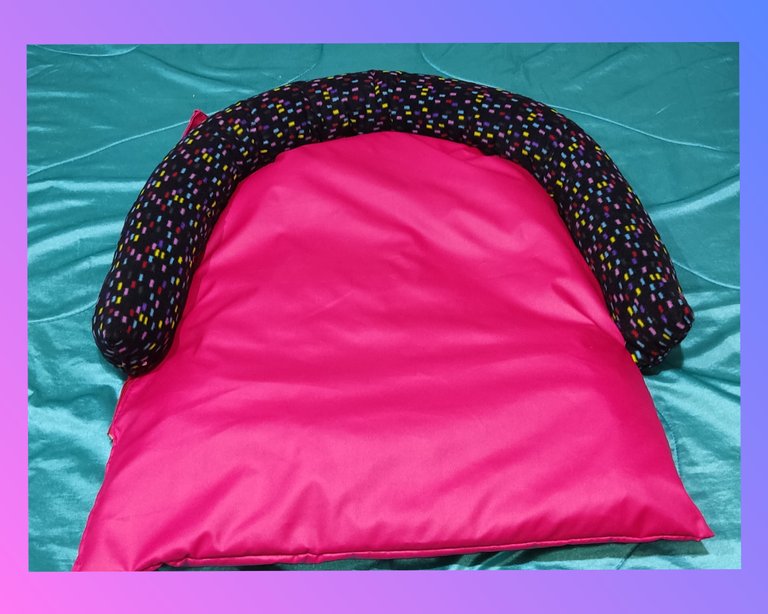
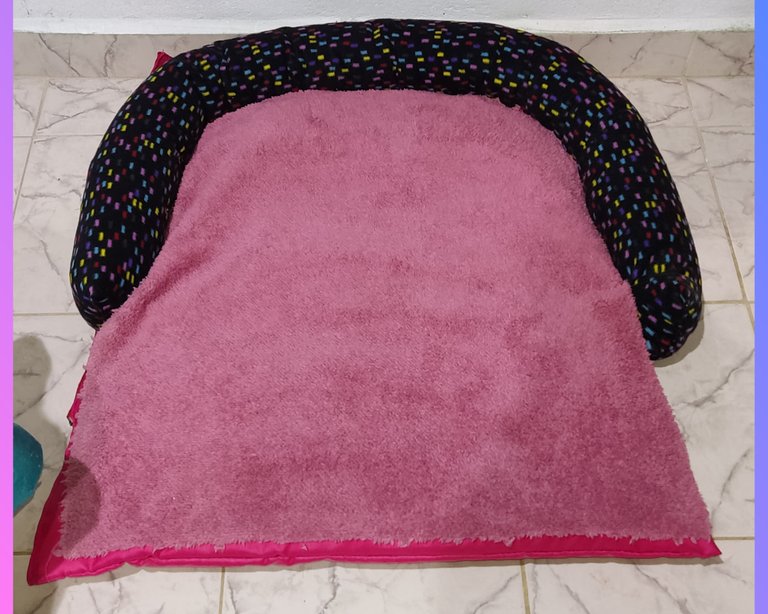
Y aquí les muestro lo contenta que quedó Kila en su cama nueva 🐶😍 viendo esa cara y esos dientes hermosos hacen valer la pena todo el trabajo y las pinchada que me llevo hacer su cama. Espero que le diré un como 🙏😅
And here I show you how happy Kila was in her new bed 🐶😍 seeing that face and those beautiful teeth make it worth all the work and prodding it took me to make her bed. I hope I will tell her a like 🙏😅.
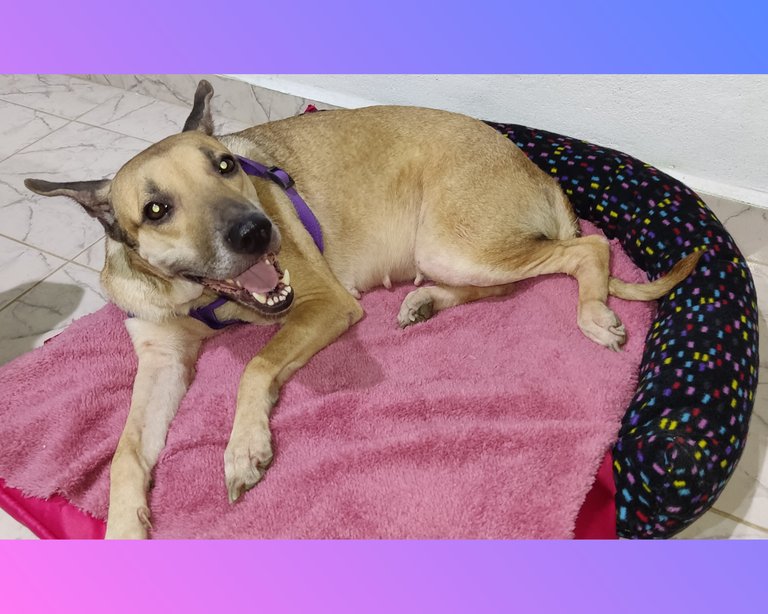
Gracias por LEERME y APOYARME ☺️ ❣️ espero que esté vlog te anime a realizarle una cama nueva a tu perrito o gatito. Los leo en los comentarios, hasta la próxima 🤗.
Thanks for READING and SUPPORTING me ☺️ ❣️ hope this vlog encourages you to make a new bed for your puppy or kitty. I read you in the comments, until next time 🤗
